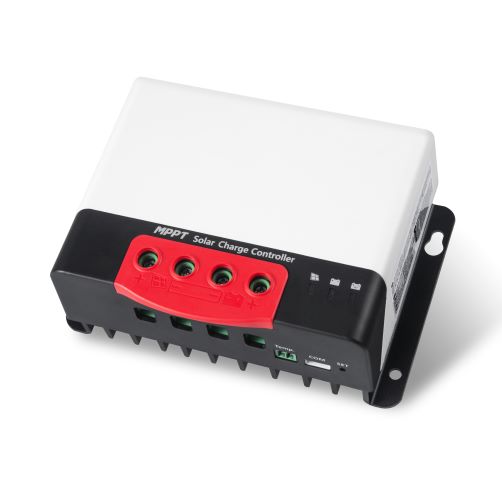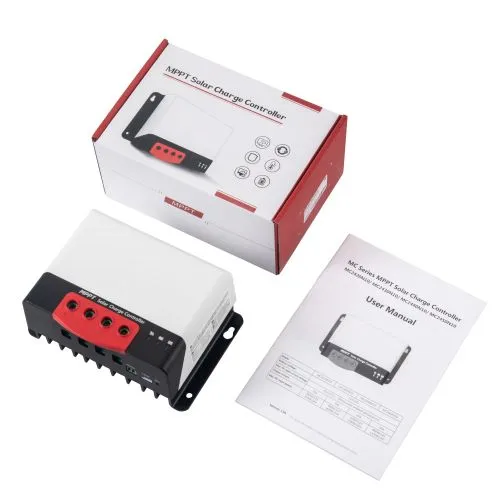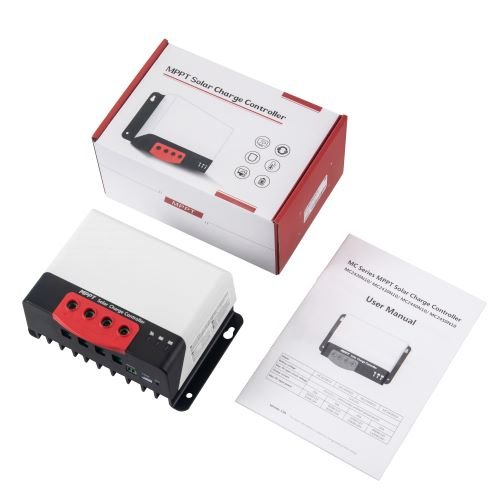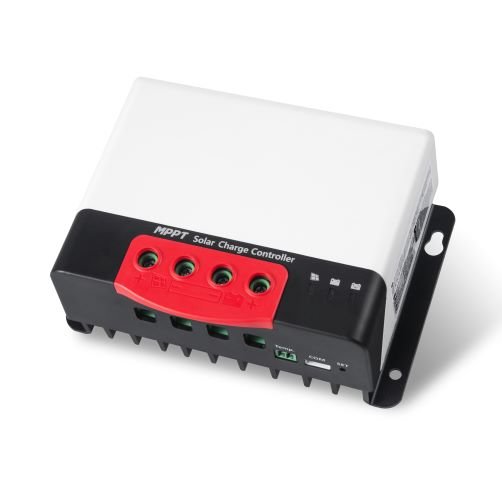©Copyright Shenzhen Hehejin Industrial Co., LTD. All rights reserved. Site Map





Power Catcher maximum power point tracking technology allows the controller to track the maximum power point of solar panels even in a complex environment. Compared with the traditional MPPT tracking technology, it boasts faster response speed and higher tracking efficiency.• It provides an active charging voltage regulation feature. At battery open circuit or lithium battery BMS overcharge protection, the controller battery terminal will output the rated charging voltage value. MPPT tracking efficiency is up to 99.9%.Due to an advanced digital power technology, the circuit energy conversion efficiency is as high as 98%.
|
Product model:
|
|
|
Current:
|
|





PowMr MC 12V 24V 20A MPPT Solar Charge Controller
Future
Brand: PowMr
Product model: MC2430N10
• PowerCatcher maximum power point tracking technology allows the controller to track the maximum power point of solar panels even in a complex environment. Compared with the traditional MPPT tracking technology, it boasts faster response speed and higher tracking efficiency.
• A built-in maximum power point tracking (MPPT) algorithm can significantly increase energy utilization efficiency of the photovoltaic system, which is about 15% to 20% higher than traditional PWM charging.
• It provides an active charging voltage regulation feature. At battery open circuit or lithium battery BMS overcharge protection, the controller battery terminal will output the rated charging voltage value.
• MPPT tracking efficiency is up to 99.9%.
• Due to an advanced digital power technology, the circuit energy conversion efficiency is as high as 98%.
• Available in multiple battery types and support charging procedures of various types of batteries such as lithium battery, colloidal battery, sealed battery, vented battery, lithium battery, etc.
• A current-limited charging mode is available. When the power of solar panel is too large and the charging current is higher than the rated valve, the controller automatically reduces the charging power so that the solar panel can operate at the rated charging current.
• Support automatic identification of lead-acid battery voltage.
• External LCD screen or Bluetooth module can be connected for viewing of equipment operating data and status, and modification of controller parameters is supported.
• Support standard Modbus protocol to meet communication needs in different occasions.
• Built-in over-temperature protection mechanism ensures that when temperature exceeds the set value of the device, the charging current decreases linearly with the temperature, thereby reducing the temperature rise of controller and avoiding high temperature damage.
• Temperature compensation and automatic adjustment of charge and discharge parameters help to improve battery life.
• Solar panel short circuit protection, battery open circuit protection and TVS lightening protection etc.
The Maximum Power Point Tracking (MPPT for short) system is an advanced charging technology that enables the solar panel to output more energy by adjusting operating conditions of the electrical module. Due to non-linear characteristics of solar array, there is maximum energy output point (maximum power point) of an array on its curve. Traditional controller (switch charging technology and PWM charging technology) fails to maintain battery charging at this point, and therefore the maximum energy of the solar panel cannot be obtained. The solar charge controller with MPPT control technology, however, can track the array's maximum power point at all time to obtain the maximum energy to charge the battery. Take a 12V system as an example. Peak voltage (Vpp) of the solar panel is about 17V, while the battery voltage is about 12V. In general, when the controller is charging the battery, the voltage of solar panel is about 12V and does not fully contribute its maximum power. But, MPPT controller can overcome this problem. It constantly adjusts the input voltage and current of the solar panel to achieve the maximum input power. Compared to the traditional PWM controller, the MPPT controller can provide the maximum power of the solar panel and thus can provide a larger charging current. In general, the MPPT controller can improve the energy utilization by 15% -20% compared with the PWM controller.
Overview
• With industry-leading PowerCatcher MPPT technology, the MC series solar charge controller enables maximum energy tracking for solar panel. This technology allows the controller to quickly and accurately track the maximum power point of PV array in any environment, obtain the maximum energy of solar panel in real time, and significantly increase energy utilization efficiency of the solar energy system.
•This product can be connected to an external LCD screen or Bluetooth communication module and PC Upper Computer for dynamic display of operating status, operating parameters, controller logs, control parameters, etc. The user can look up various parameters and can modify the control parameters as needed to suit different system requirements.
• The controller adopts standard Modbus communication protocol, which is convenient for the user to view and modify the parameters of the system. Meanwhile, the company provides free monitoring software that can maximize the convenience for users to meet different needs of remote monitoring.
• The controller provides overall electronic fault self-test and powerful electronic protection functions which minimize components damage due to installation error and system failure.


Electrical parameters
| Items | Parameters | |||
| Model | MC2420N10 | MC2430N10 | MC2440N10 | MC2450N10 |
| System voltage | 12V/24V | |||
| Zero load loss | <10mA | |||
| Battery voltage | 9V~32V | |||
Maximum PV open circuit voltage | 92V(25℃);100V(Lowest ambient temperature) | |||
Maximum power point voltage range | (Battery voltage +2V) ~ 72V | |||
| Rated charging current | 20A | 30A | 40A | 50A |
| Maximum PV input power | 260W/12V 520W/24V | 400W/12V 800W/24V | 550W/12V 1100W/24V | 660W/12V 1320W/24V |
Charging conversion efficiency | ≤98% | |||
| MPPT tracking efficiency | >99% | |||
Temperature compensation coefficient | -3mv/℃/2V(default); Lithium battery features no temperature compensation | |||
| Operating temperature | -35℃ ~ +60℃ | |||
| IP rating | IP32 | |||
| Weight | 650g | 830g | 1040g | 1335g |
| Communication mode | TTL series communication | |||
| Altitude | ≤ 3000 meters | |||
| Dimensions(mm) | 150*105.6*61.5 | 150*105.6*67.5 | 183*127*65.5 | 183*127*69.5 |
Battery type default parameters
| Comparison of parameters of various types of battery | |||||
| Set voltage Battery type | Sealed lead-acid battery | Gel lead-acid battery | Flooded lead -acid battery | Lithium battery | User defined |
| Overvoltage disconnection voltage | 16.0V | 16.0V | 16.0V | —— | 9~17V |
| Equalizing charge voltage | 14.6V | —— | 14.8V | —— | 9~17V |
| Boost charge voltage | 14.4V | 14.2V | 14.6V | 14.4V | 9~17V |
| Floating charge voltage | 13.8V | 13.8V | 13.8V | —— | 9~17V |
| Boost charge recovery voltage | 13.2V | 13.2V | 13.2V | —— | 9~17V |
| Equalizing charge duration | 120 min. | 120 min. | —— | 0~600 min. | |
| Equalizing charge interval | 30 days | 0 days | 30 days | —— | 0~250D (0 indicates turning off equalizing charge function) |
| Boost charge duration | 120 min. | 120 min. | 120 min. | —— | 10~600 min. |